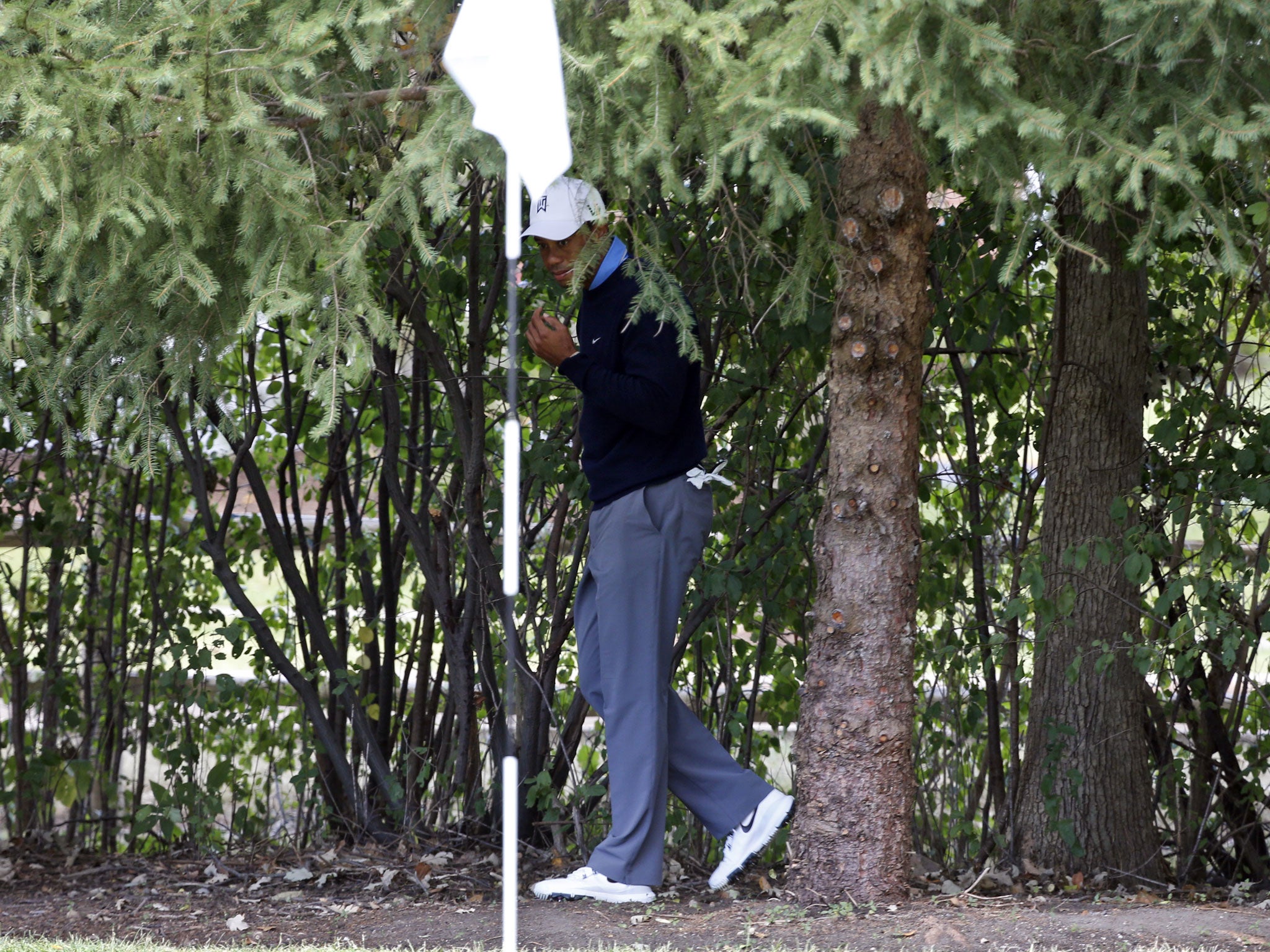Kevin Garside: The best under more scrutiny than the rest due to TV vigilantes
The Way I See It: Technology works in sports where all players fall under the same lens

The level playing field in sport is fundamental and sacred: same pitch, same court, same wicket, same course, same pool, same track. Go on, give it your all and may the best man, woman or team win.
Not so in golf. And as the season ends in America and builds to a conclusion in Europe, the sport is slowly waking up to that fact. The field has been skewed by, of all things, technology, or rather its application, and the role of agents who, though bound by interest and enthusiasm, have neither authority nor legitimacy in the game yet have acquired a material role in the officiating of tournaments. Golf is the only sport in which the audience, whether on site or more likely in front of a remote monitor, can affect outcomes by direct involvement.
The most recent example involves Tiger Woods, who a week ago was penalised two strokes when a camera revealed that, while removing a loose twig from behind his ball in the trees behind the first green at the BMW Championship, he caused it to move, coming to rest on an adjacent millimetre of flora rather than to oscillate and return to its original position. The latter is legal, the former not. Yippee, you might say. Three cheers for technology. The camera cleared up a mess the human eye could not spot and we arrived at the correct decision. Indubitably true. That has to be the point, surely?
Yes and, importantly, no. Yes if universally applied to every man in the field. No if only a small percentage of the field are subject to the scrutiny of the technology in use, which is the case in golf. As a result televised tournaments are not played under the same regulatory conditions.
Woods screamed blue murder after his third rules catastrophe of the season. The penalty was not brought to his attention until he had reached the scorers’ hut. What he thought was a round of 70 became a 72. He was now four shots, not two, off the pace. The infraction, not detectable by the naked eye – and we have to accept his word for that – was spotted by a TV producer, who has no part in the contest.
This is golf’s associated problem. The producer’s job is to make sure the cameras are pointing in the right direction with the red recording light on. He is not an official, he is not part of the regulatory process, and he has no stake in the game. But since golf allows for the unfettered flow of information from any source into the court, said producer became a key witness.
On other occasions the sofa vigilante watching in his living room at home is the active ingredient triggering golf’s judicial process. Imagine the carnage if the fan in the stand, or at home watching live, had a role in the officiating of football. Ref misses the handball in the box. Fan texts the appropriate number and at the end of the game the referee awards a retrospective penalty which decides the match. That’s golf.
No wonder the PGA Tour of America left for their post-season debrief last night in a muddled huddle desperate to sort out the issue of technology and its application. On this side of the pond the R&A said last week that it continues to monitor developments. It is caught on the horns of the truth dilemma. The use of cameras is self-evidently desirable because in the main they remove any doubt. But how can it be right that scrutiny is governed by your world ranking? The more successful the golfer the more he is observed. It is plain unjust that some are exposed to greater regulatory vigilance than others.
Central to the golfing code is the idea of self-policing. It is incumbent on the player to call a penalty on himself. Woods knows the rules. Though there are examples of players who have not behaved well in this area, they are relatively few. The vast majority adhere rigidly to the principle, which remains one of the great moral pillars around which the sport’s values are built.
Technology works wonderfully well in tennis, cricket, rugby and now football because the pitch is small and the participants fall simultaneously under the same lens. In golf the pitch extends over four miles and it takes 12 hours to complete 150 rounds. Groupings are compiled according to rank and scheduled to meet television demands. This means that every ball hit by Woods is under the scrutiny of a camera. How many times have we seen Graham DeLaet on our screens? Yes, he plays golf too.
Until technology and the economics of golf allow regulators to train cameras on every player in the field the answer is to make inadmissible any evidence divined through this mechanism or remotely. Let rulings be in the hands of on-course adjudicators seeking solutions to matters raised by participants and administered in real time. We want the truth, but it has to be the whole truth, not the partial variety presently undermining the game.
Join our commenting forum
Join thought-provoking conversations, follow other Independent readers and see their replies
Comments